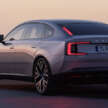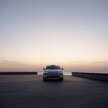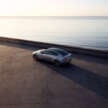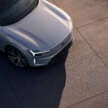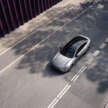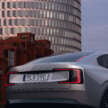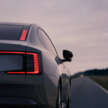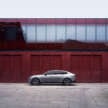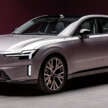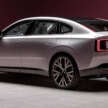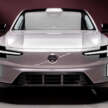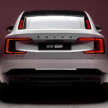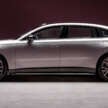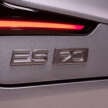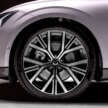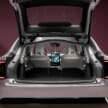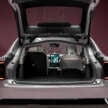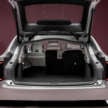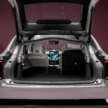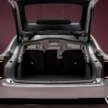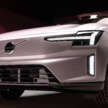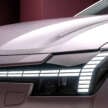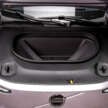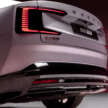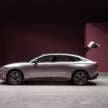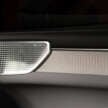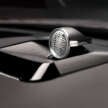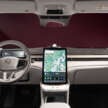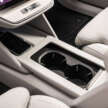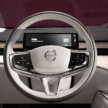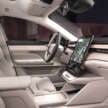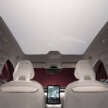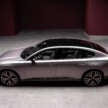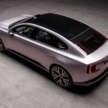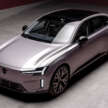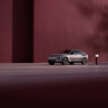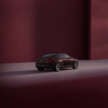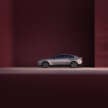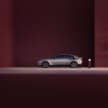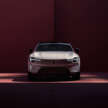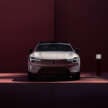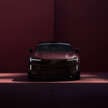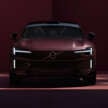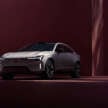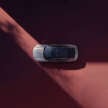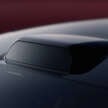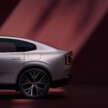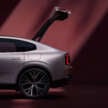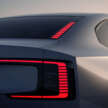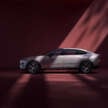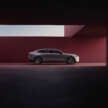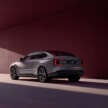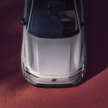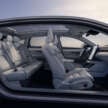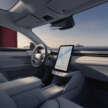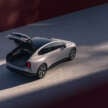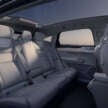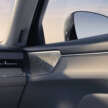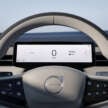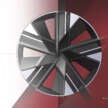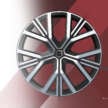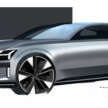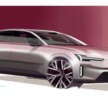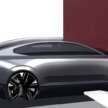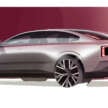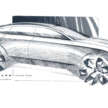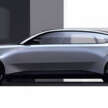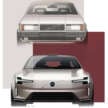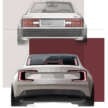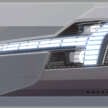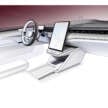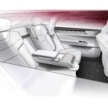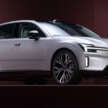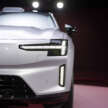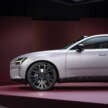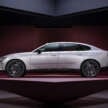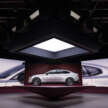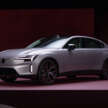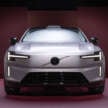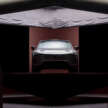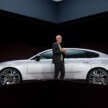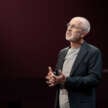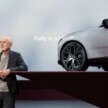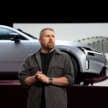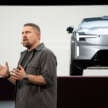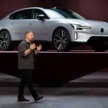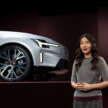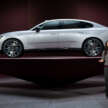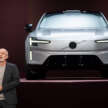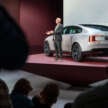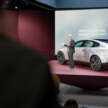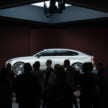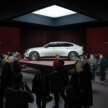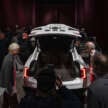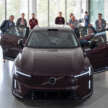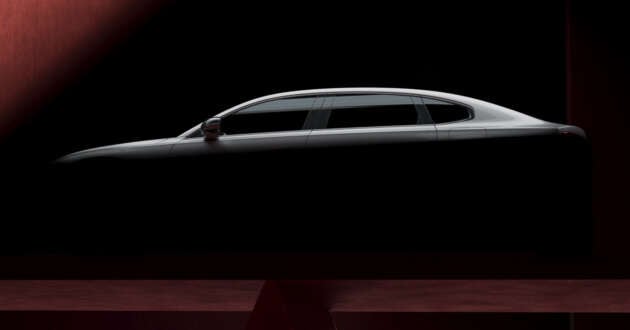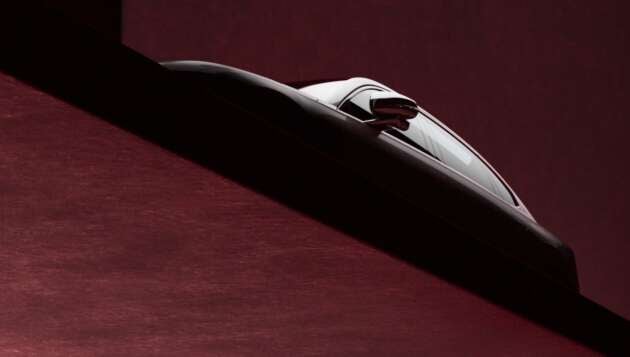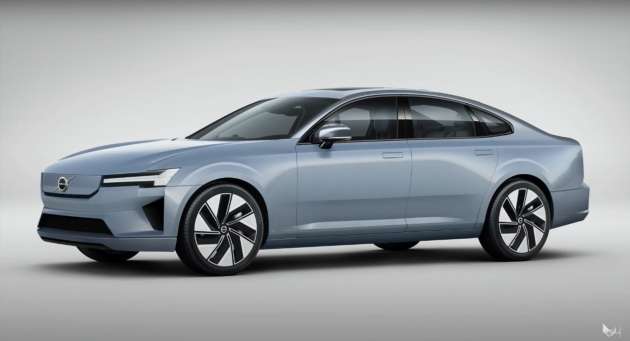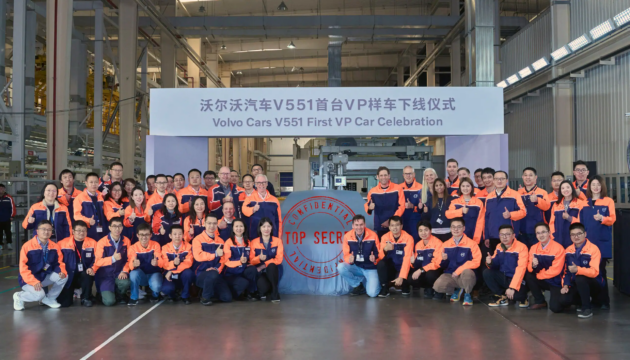
After some teasing, Volvo has finally unveiled its first all-electric sedan, the ES90. This joins the Swedish brand’s portfolio of electric vehicles (EVs) that includes the EX90, EM90, EX40, EC40 and EX30. While normal folk might look at the ES90 as a sedan, Volvo says its new offering is “in a class of its own.” According to the company, the ES90 “combines the refined elegance of a sedan, the adaptability of a fastback, and the spacious interior and higher ground clearance associated with SUVs.”
Design cues that reflect this sentiment include a flat rump for that fastback look, while the accentuated wheel arches provide the SUV vibes. We also find typical Volvo touches such as the Thor’s Hammer daytime running lights, which mimic the look of the EX90 by extending into the side of the front bumper. The DRLs split the dual-element headlamps, which sadly misses out on the EX90’s fancy start-up sequence.
At the rear, we find more evidence of the EX90’s influence in the taillights, which have a C-shaped design and are accompanied by additional light bars tracing their way up the sides of the rear window. Flush door handles, a largely featureless face (aside from the Iron Mark and lower intake) and a roof-mounted lidar sensor are other notable cues. All in all, the shape contributes to a drag coefficient of just 0.25.

Given the ‘90’ designation, the ES90 is a large vehicle, measuring in at 5,000 mm long, 1,942 mm wide and with a wheelbase that spans 3,102 mm. The height is dependent on whether air suspension is fitted and the type of powertrain optioned. Based on the technical specifications, the ES90 with air suspension and RWD has an overall height of 1,547 mm, with the figure decreasing by one mm to 1,546 mm with AWD. On regular coil springs and with AWD, it is 1,553 mm.
The configuration chosen also impacts ground clearance, which is pretty generous and gives the sedan an SUV feel. With RWD and air suspension, you get 181 mm, with the figure reduced to 177 mm with AWD. The ES90 with coil springs and AWD has 184 mm of ground clearance, and Volvo says all setups have a wading capability of 250 mm.
Built on the SPA2 platform, the ES90 is the first Volvo to use an 800V electrical architecture and will be offered with three powertrains, with the specifications of each as follows:
Single Motor
- Electric motor output: 333 PS (329 hp or 245 kW) and 480 Nm; RWD
- 0-100 km/h time: 6.9 seconds
- Top speed: 180 km/h
- Battery: 92 kWh gross (88 kWh usable)
- Range (WLTP): 650 km
- Range (CLTC): 700 km
- AC charging: 11 kW; 10-100% in eight hours
- DC charging: 300 kW; 10-80% in 20 minutes
Twin Motor
- Front electric motor output: 177 PS (174 hp or 130 kW) and 265 Nm
- Rear electric motor output: 272 PS (268 hp or 200 kW) and 405 Nm
- Total system output: 449 PS (443 hp or 330 kW) and 670 Nm; AWD
- 0-100 km/h time: 5.5 seconds
- Top speed: 180 km/h
- Battery: 106 kWh gross (102 kWh usable)
- Range (WLTP): 700 km
- Range (CLTC): 740 km
- AC charging: 11 kW; 10-100% in 10 hours
- DC charging: 350 kW; 10-80% in 20 minutes
Twin Motor Performance
- Front electric motor output: 299 PS (295 hp or 220 kW) and 390 Nm
- Rear electric motor output: 381 PS (375 hp or 280 kW) and 480 Nm
- Total system output: 680 PS (671 hp or 500 kW) and 870 Nm; AWD
- 0-100 km/h time: 4 seconds
- Top speed: 180 km/h
- Battery: 106 kWh gross (102 kWh usable)
- Range (WLTP): 700 km
- Range (CLTC): 740 km
- AC charging: 11 kW; 10-100% in 10 hours
- DC charging: 350 kW; 10-80% in 20 minutes
Moving inside, you’ll find a dashboard layout that is reminiscent of the EX90, with a nine-inch digital instrument cluster, head-up display and vertical-oriented 14.5-inch central touchscreen. The infotainment has Google built-in, so services such as Google Maps, Google Assistant and downloadable Google Play apps are all present.
Other features pointed out include six interior ambient light themes, a panoramic roof that can also be had with an electrochromic function, four-zone climate control with air purification and three levels of sound system, including a 25-speaker Bowers & Wilkins setup. Exclusive to the Bowers & Wilkins system is a special mode replicating the sounds of London’s legendary Abbey Road Studios.
As you’d expect of a Volvo, safety is a big focus point for the ES90, with features such as collision avoidance and mitigation, autonomous emergency braking, Pilot Assist, blind spot monitoring, a 360-degree camera, driver monitoring, door opening alert, full-cabin occupant sensing and more coming as standard.
As for boot space, 424 litres is available, expandable to 733 litres with the rear bench folded down. There is also a 22-litre frunk at the front that is good for storing charging cables.
In line with Volvo’s sustainability ethos, 29% of all aluminium and 18% of all steel used in the ES90 is recycled. The sedan also contains 16% recycled polymers and bio-based materials, while the interior wood panels are made from FSC-certified wood. A “battery passport” also uses blockchain technology to keep track of the raw materials used for the battery.
In the premium electric sedan space, rivals for the ES90 include the Audi A6 e-tron, BMW i5 and Mercedes-Benz EQE. The ES90 is available for order now in selected European markets, with other markets set to be added later this year and into 2026.











